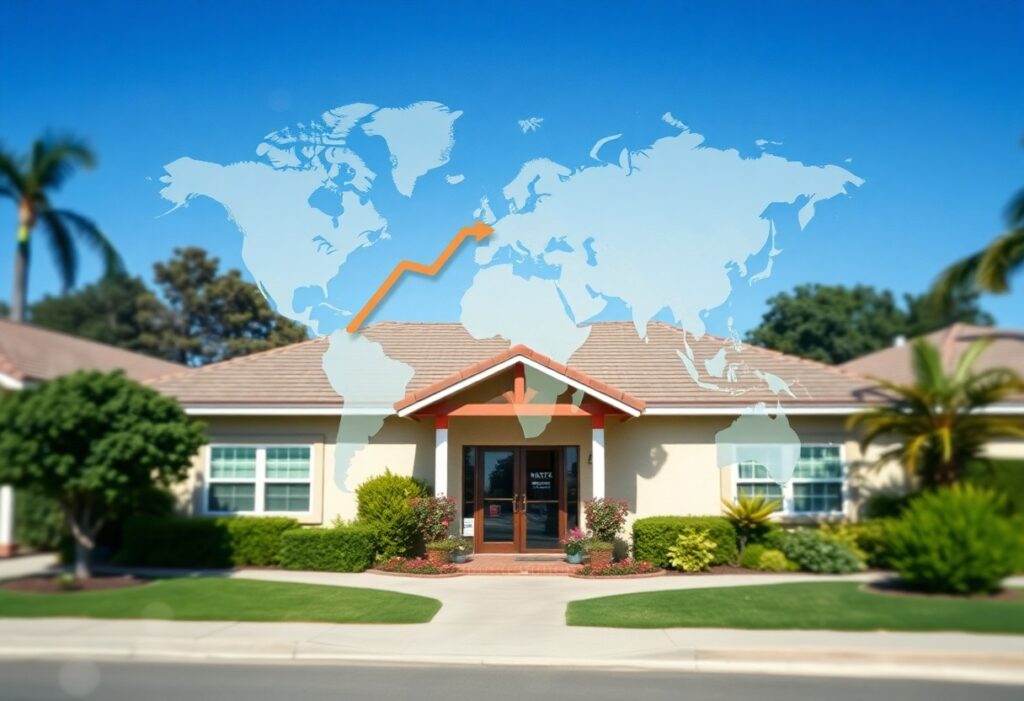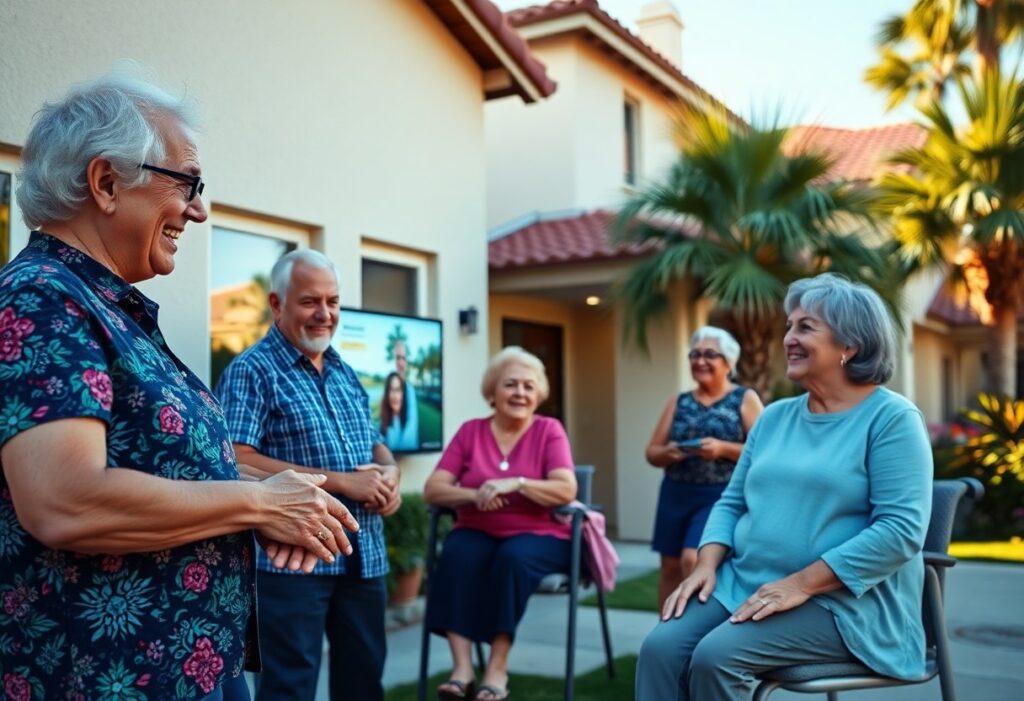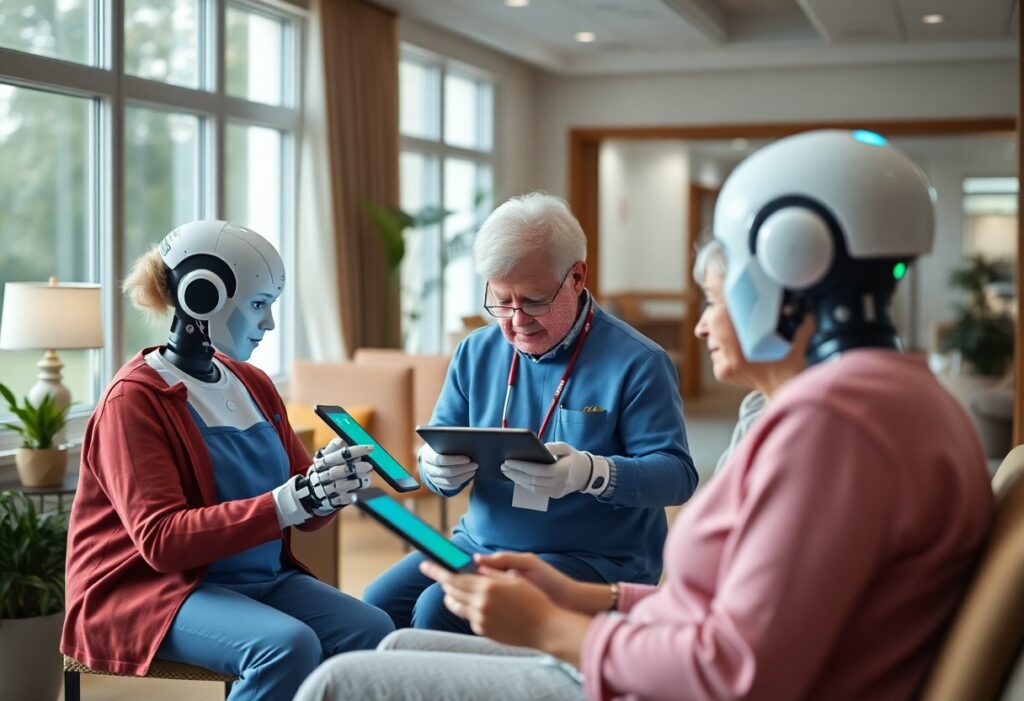Just as the world around you evolves, so too does technology in senior living communities, reshaping the experience for residents and staff alike. You may find that advanced tools and innovations not only enhance quality of life but also improve safety and connectivity. While the integration of smart devices can empower residents, it’s imperative to address potential challenges, such as privacy concerns and the risk of diminishing personal interactions. In this post, you will discover the significant impacts of technology and how these solutions are being successfully implemented across communities.
Key Takeaways:
- Enhanced Communication: Technology facilitates improved communication between residents, families, and staff, ensuring that everyone stays connected and informed.
- Increased Safety: Implementation of smart devices and monitoring systems enhances the safety and security of residents, allowing for quicker responses in emergencies.
- Personalized Care: Advanced technologies enable tailored care plans for residents, promoting individualized support that meets diverse needs and preferences.
The Current State of Senior Living Communities
Overview of Senior Living Options
An array of senior living options exists today to cater to the diverse needs of older adults. You can choose from independent living, assisted living, memory care, and nursing homes, each designed to support different levels of care. Independent living communities allow you the freedom to live autonomously with minimal assistance, while assisted living provides more structured support, such as help with daily activities. Conversely, memory care facilities specialize in providing care for individuals with Alzheimer’s or other memory-related issues, ensuring a secure and nurturing environment.
It’s important for you to evaluate these options based on both your needs and preferences, as well as those of your loved ones. Factors such as social opportunities, amenities, and healthcare services can greatly influence your choice. As the aging population continues to grow, many communities are evolving to accommodate a more active and engaged lifestyle, providing not only physical care but also social and emotional support.
Technology Usage Trends
Below the surface of these evolving communities, technology is increasingly playing a significant role in how care is delivered. You might notice that many senior living facilities are implementing smart home technologies, telehealth services, and even wearable devices to monitor health. These solutions enable you and your loved ones to stay connected while ensuring safety and promoting independence. Enhanced communication methods, such as video calls and online platforms, allow for smoother interactions with caregivers, medical professionals, and family members.
And as technology integrates itself into senior living, there are both positive and negative aspects to consider. On a positive note, technology enhances communication, improves health monitoring, and fosters social connections, making life more manageable and enriching. However, you should also be aware of the potential downsides, such as the risk of isolation due to dependence on technology and data privacy concerns that may arise with the management of personal information. Balancing these factors will be vital in navigating the technology landscape within your senior living community.

Key Technologies Transforming Senior Living
Some of the most impactful technologies currently reshaping senior living communities include health monitoring devices and smart home solutions. These advancements not only enhance the quality of life for residents but also provide peace of mind for their families and caregivers. As the population ages, integrating these technologies becomes vital in promoting independence, safety, and overall well-being within these communities.
Health Monitoring Devices
An array of health monitoring devices is playing a pivotal role in senior living environments. From fitness trackers to smart medical alert systems, these tools can help you manage chronic conditions, track vital signs, and enhance health care response times. By consistently monitoring your health metrics, these devices can identify potential issues early on, allowing for timely intervention and ultimately leading to better health outcomes.
Smart Home Solutions
Along with health monitoring devices, smart home solutions have revolutionized the way seniors experience their living spaces. You can now benefit from advanced technologies such as voice-activated assistants, automated lighting, and intelligent temperature control, all designed to foster greater independence and enhance your daily life. These innovations allow you to manage your environment seamlessly, reducing the physical and cognitive demands often associated with routine tasks.
Consequently, adopting smart home solutions not only transforms your living experience but also significantly improves your safety and comfort. With features like remote monitoring and instant alerts to family members or healthcare providers in case of an emergency, you gain an added layer of protection. Ultimately, these smart technologies empower you to maintain your autonomy while ensuring that help is readily available when you need it most. These advancements create a sense of security that can lead to even greater enjoyment of your surroundings, giving you the freedom to flourish in your golden years.

Benefits of Technology in Senior Living
For you and your loved ones, the integration of technology in senior living communities often translates to enhanced safety and security. Smart technologies such as surveillance cameras, emergency response systems, and fall detection devices provide peace of mind to both residents and their families. With these measures in place, you can feel assured that help is readily available in case of an emergency. Additionally, access control systems ensure only authorized individuals can enter your living space, further safeguarding your well-being within the community.
Enhanced Safety and Security
Against traditional methods of securing senior living communities, modern technologies offer a more robust solution to health and safety concerns. You may find that biometric systems, such as fingerprint access for building entry, enhance the overall security landscape. These advancements not only deter potential intrusions but also make everyday life smoother and more convenient for residents like you, who can focus on enjoying your lifestyle without constant worry over personal safety.
Improved Health and Wellness
The implementation of technology in senior living settings significantly elevates your health and wellness. With the use of telehealth services, fitness tracking apps, and electronic health records, you can manage your healthcare needs more efficiently. This continuous monitoring helps maintain an optimal level of wellness, enabling you to lead an active and fulfilling life. Furthermore, health alerts can be sent directly to healthcare providers, ensuring timely intervention when necessary.
Wellness programs that incorporate technology are becoming increasingly accessible in senior living communities. You can engage in virtual fitness classes, attend health webinars, or utilize mobile applications to track your medication and appointments. These resources not only enhance your physical health but also contribute to your mental well-being by fostering social connections and encouraging participation in community activities. By embracing technology, you’re empowered to take charge of your health, ensuring a vibrant and active lifestyle during your golden years.
Challenges of Implementing Technology
Costs and Budget Considerations
Technology implementation can significantly strain your budget, as it often involves upfront expenses related to hardware, software, and infrastructure upgrades. Additionally, you need to factor in ongoing costs for maintenance, technical support, and staff training. These expenses can accumulate quickly, especially if you aim to integrate multiple systems that enhance residents’ lives, such as telehealth services, smart home devices, or communication platforms. It’s important to conduct a thorough cost-benefit analysis to ensure the technology you choose aligns with your community’s financial goals while providing meaningful benefits to residents.
Another aspect of budget considerations is the potential for unanticipated expenses. Given the rapid pace of technological advancement, solutions that seemed adequate today may become obsolete tomorrow. You’ll need to allocate funds for regular updates or replacements as technology evolves. Additionally, you may encounter costs associated with training your staff to effectively use new tools. By carefully planning your budget and anticipating future needs, you can create a sustainable technology strategy that benefits both your community and residents.
Resistance to Change Among Residents
Along with financial considerations, you will also face the challenge of potential resistance to change among your residents. Many seniors may feel apprehensive about adopting new technologies, commonly due to a lack of familiarity or fear of the unknown. This resistance can hinder the integration of these systems, as residents may be reluctant to utilize the technology intended to enhance their lives. Encouraging engagement and fostering a culture of adaptation is pivotal in ensuring that your residents feel supported throughout this transition.
Even as you introduce innovative solutions, it’s important to facilitate a smooth transition by providing comprehensive training programs tailored to your residents’ needs. This can alleviate fears and build confidence in using new technologies. Incorporating user-friendly interfaces may ease apprehensions, while providing on-site support can further bridge the gap between technology and your residents’ everyday activities. Ultimately, fostering an environment of patience and understanding will greatly enhance the likelihood of successful technology implementation within your community.
Strategies for Successful Technology Integration
Staff Training and Support
Beside the technology itself, the effectiveness of its implementation heavily relies on the proficiency of your team. Investing in comprehensive staff training and support ensures that employees are not just familiar with the new tools but are also confident in using them. Consider developing tailored training programs that cater to different learning styles, as this can enhance retention and application of knowledge. Continuous support mechanisms, such as technical assistance or on-site troubleshooting, can mitigate frustrations and bolster a culture of adaptability among staff members.
Your staff plays a pivotal role in encouraging resident engagement with technology. By demonstrating a strong understanding of technological tools, your team can effectively answer questions and provide guidance to residents, leading to higher adoption rates. Involving employees in the decision-making process for technology integration can also foster enthusiasm and ownership, ultimately benefiting the community.
Engaging Residents in the Process
Residents have unique insights that can significantly influence how technology is perceived and adopted in your community. By actively involving them in the selection and implementation phases of new technologies, you can create a sense of ownership and purpose. Conducting surveys or focus groups allows for an exchange of ideas that not only caters to their needs but also addresses any concerns they may have. It’s important to ensure that you maintain open lines of communication, so residents feel heard and valued.
The success of technology integration also hinges on how well residents adapt to the changes. By fostering a supportive environment that encourages experimentation with new tools, you can help alleviate apprehension and build a sense of community. Consider organizing training sessions where residents can learn alongside staff, allowing for a collaborative atmosphere that promotes sharing of challenges and successes. Celebrating milestones in technology adoption can reinforce positive experiences and motivate more residents to become involved.
The Future of Technology in Senior Living Communities
All indications point to a bright and innovative future for technology in senior living communities. As technological advancements continue to evolve, you will likely see an increase in more user-friendly devices and applications specifically designed to cater to the unique needs of senior residents. From wearable health monitors to smart home automation systems, these innovations are not just enhancing the living experience but also enabling greater independence and safety for seniors. Additionally, incorporating artificial intelligence and machine learning can help create personalized care plans based on individual health data and preferences, optimizing the quality of care you can receive.
Emerging Innovations
The integration of telehealth services into senior living communities is one of the most promising emerging innovations. By bringing medical expertise directly to your home through virtual consultations, healthcare access becomes more convenient and timely. Furthermore, advancements in smart technology will enable things like voice-controlled assistants and intelligent home systems that can assist you in managing daily tasks, thereby enhancing your independence. Robotics may also play a role in social interaction and companionship, especially for those who may be feeling isolated.
Long-term Impact on Resident Quality of Life
Before you consider the implications of implementing technology in senior living, it’s important to recognize how this trend shapes your overall quality of life. The right technology can significantly improve your daily experiences, enabling you to engage more freely with your surroundings, access healthcare services with ease, and maintain social connections despite potential mobility limitations. This not only enhances your physical well-being but also fosters emotional health, allowing for a fulfilling lifestyle in your later years.
At the heart of these advancements, the objective is to provide a living environment that enhances your autonomy while ensuring that you feel safe and connected. By leveraging technology, you can enjoy an improved quality of life, enhanced security, and better access to healthcare services. The ultimate aim is to create a community where your needs are met, enriching your experiences and allowing you to thrive well into your golden years.
Conclusion
Hence, as you explore the integration of technology in senior living communities, you will recognize its vast potential to enhance your quality of life and well-being. From telehealth services to social connectivity platforms, technology is not merely an add-on; it creates a supportive environment that fosters independence and engagement among older adults. The successful implementation of these technologies requires a thoughtful approach that considers the unique needs of residents, ensuring that you feel comfortable and empowered in your living space.
Moreover, engaging with resources like The Impact of Technology on Living Environments for Older … can further inform you about the transformative effects of innovation in this sector. As you navigate this evolving landscape, embracing these technological advances can lead to a more enriched and fulfilling life, enhancing the overall experience within senior living communities.
FAQ
Q: How has technology improved safety in senior living communities?
A: Technology has significantly enhanced safety in senior living communities through various innovations. For example, emergency alert systems, such as wearable devices and smart home sensors, allow seniors to quickly call for help in case of a fall or medical emergency. Additionally, surveillance cameras and access control systems help ensure secure environments. Furthermore, monitoring systems can track vital signs and health metrics, enabling staff to respond promptly to any concerning changes in a resident’s health condition.
Q: What types of technology are commonly implemented in senior living communities?
A: Senior living communities frequently implement a range of technologies tailored to residents’ needs. Common examples include telehealth services that facilitate virtual appointments with healthcare providers, enhancing access to medical care. Smart home features, such as automatic lighting, temperature control, and voice-activated assistants, improve daily living convenience. Social engagement platforms and entertainment systems help combat loneliness by connecting residents with family and friends, as well as providing access to activities and resources that promote mental well-being.
Q: How do staff members adapt to technological changes in senior living facilities?
A: Staff members in senior living facilities typically undergo training programs to adapt to new technologies. These programs focus on user-friendly interfaces, troubleshooting common issues, and understanding the benefits of each technology. Ongoing support can also be made available through tech teams or on-site training sessions, ensuring that staff members feel comfortable with the tools they are using. Regular feedback from staff can help management improve or adjust technology to better meet the challenges faced in daily operations.








